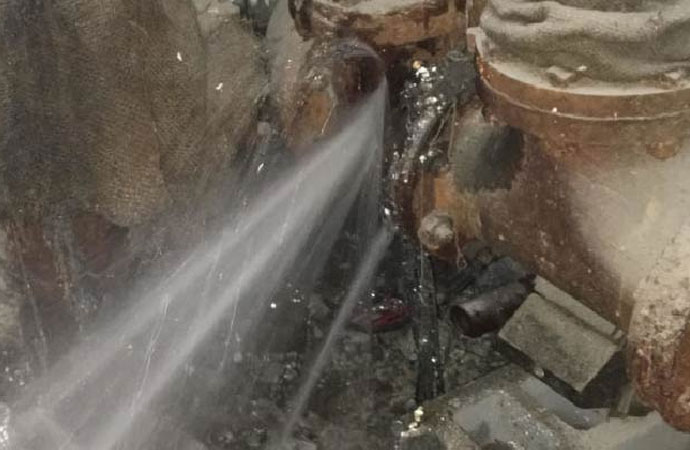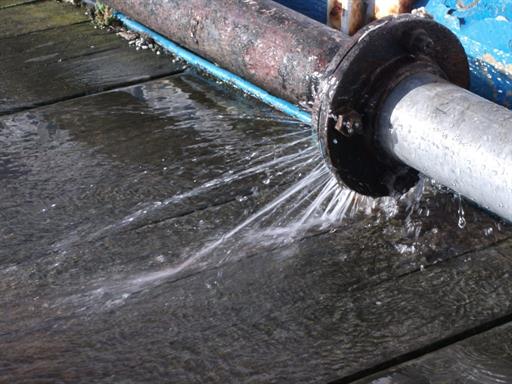Just how do you really feel when it comes to How to Install and Connect a New Dishwasher?

A ruptured pipe is a major emergency; you can only stand as you enjoy water you pay a lot to rejoin with the earth. In worse cases, you observe a swimming pool on your kitchen floor, which is a terrific journey threat, especially if you have children around. If the pipe that ruptured remained in your wall surfaces, trouble: you may need to repaint that entire area.
Just how can a tragedy like a burst pipe be protected against and also taken care of? Well, by paying attention to your professional emergency plumbings as well as following these guidelines.
Exactly how do I recognize when my pipelines have ruptured?
Fluctuating water pressures
Pipes do not just burst in a day. You may have observed that your cooking area tap or shower doesn't run right away when you turn the tap. It might stop briefly for a few seconds and after that blast you with more pressure than normal.
In various other circumstances, the water might appear typical in the beginning, after that decrease in stress after a couple of secs.
Damp wall surfaces and water stains
Before a pipe bursts, it will certainly leak, many times. If this consistent leaking goes unnoticed, the leakage might graduate right into a vast tear in your pipeline. One simple way to prevent this emergency is to watch out for damp wall surfaces ad water spots. These water spots will lead you right to the leak.
Puddles under pipes and sinks
When a pipe bursts, the outflow forms a pool. It might appear that the puddle is growing in size, and no matter how many times you wipe the puddle, in a few minutes, there's another one waiting to be cleansed. Typically, you may not be able to map the pool to any kind of noticeable pipes. This is a sign to call a professional plumber.
Untraceable dripping noises
Pipe bursts can take place in the most unpleasant places, like within concrete, inside wall surfaces, or under sinks. When your home goes silent, you may be able to listen to an irritatingly relentless leaking noise. Even after you have actually examined your shower head as well as kitchen tap, the trickling might continue.
Dear visitor, the dripping might be originating from a pipeline inside your walls. There isn't much you can do concerning that, other than tell an expert plumber.
Shut down the Water
When water ices up, it broadens in volume by concerning 9 percent. As well as it increases with incredible force: The pressure inside pipelines may go from 40 pounds per square inch to 40,000 psi! No pipeline can hold that much pressure, so it bursts. The break might occur where the ice kinds, however regularly, it happens where water stress discovers a weak spot in the pipe. That might be inches and even feet from the frozen location. Discover the water shutoff valve and switch off the water to avoid even more damages. You may also require to shut off the electrical energy also, relying on where the leaks takes place as well as how huge it is.
Contaminated water
Many people think a burst pipeline is a one-way outlet. Fairly the contrary. As water flows out of the hole or wound in your plumbing system, pollutants find their method.
Your water might be polluted from the resource, so if you can, inspect if your water container has any type of troubles. However, if your alcohol consumption water is supplied as well as purified by the city government, you need to call your plumber right away if you see or scent anything funny in your water.
What do I do when I detect a burst pipeline?
Your water meter will certainly continue to run even while your water wastes. To decrease your losses, find the major controls and turn the supply off. The water pipe are an above-ground structure beside your residential or commercial property.
How to Fix & Detect a Leaking Pipe
How Do I Know if a Pipe is Leaking?
Leak detection tests can help you determine if your pipe has a leak. Even if you don’t see an apparent leak, you should still conduct leak detection tests regularly to save water and money—and prevent major damage to your home.
Water meter. It can be helpful to figure out what your usual water meter usage numbers are and then monitor them regularly. To monitor your meter, first, turn off all water faucets in your home. Check the meter and write down the numbers. In a few hours, check the meter again. If the numbers have changed, you have a leak. Water gauge. Use a water gauge to test your water pressure. Your showerhead should produce a certain amount of water pressure based on its model and design. If the pressure is lower than it is supposed to be for that specific showerhead, your home likely has a leak. Puddles. Look inside your bathroom, laundry, and kitchen sink cabinets. Puddles around the cabinets or around toilets, tubs, showers, and washing machines indicate the presence of a leaking pipe. You may also notice loose tiles, peeling or flaking paint, or mold caused by water accumulation. Napkin test. Even if you don’t see any puddles, you may still have a leak. You can test for water leaks in the bathroom, laundry, and kitchen by wiping below-sink connections with a napkin, paper towel, or piece of toilet paper. If it becomes damp, you probably have a leaking pipe under the sink. Discolored walls. Walls that are discolored—usually with brown or yellow stains—or bulging might mean that they have been impacted by water damage caused by a leaking pipe. Smell. A leaky pipe will create sitting water, and over time, that water may develop a musty smell. If your home smells musty, but you can’t locate the source, it may be due to a leak. Steps for Fixing a Leaking Pipe
A leaky drain can be remedied by tightening the pipe base, replacing the drain seal, caulking the rim, and tightening the pipe nut. Similarly, a leaking toilet pipe can be treated by tightening the packing nut. You may also need to replace the valve. A leaky faucet may just need tightening or replacement of the washers. If that doesn’t work, consider replacing your faucet. If your pipe has a hole in it, you may want to use a pipe leak sealer or pipe leak tape. This quick fix for water pipe leaks can also temporarily fix a copper pipe leak. https://www.ahs.com/home-matters/quick-tips/how-to-tell-if-pipes-are-leaking/

I'm certainly very eager about How to Prepare for Your Dishwasher Installation and I really hope you enjoyed reading the entire page. For those who liked our page kindly do not forget to pass it around. Bless you for your time. Visit us again soon.
Book Now